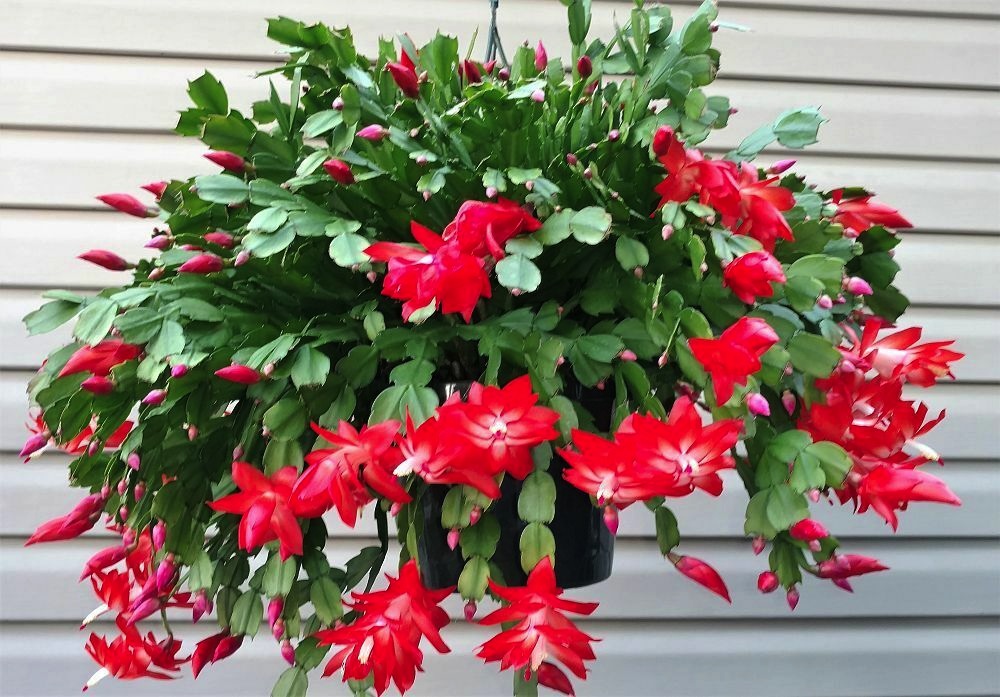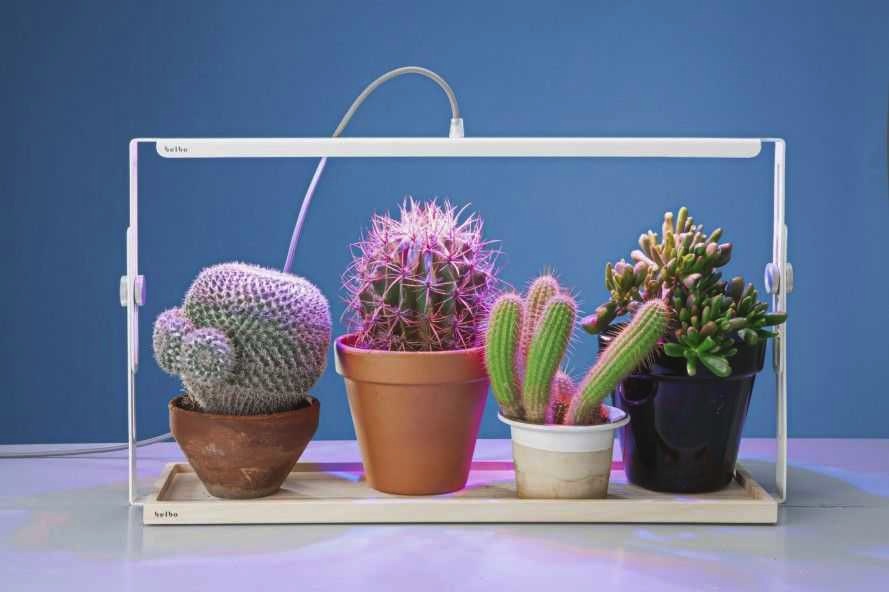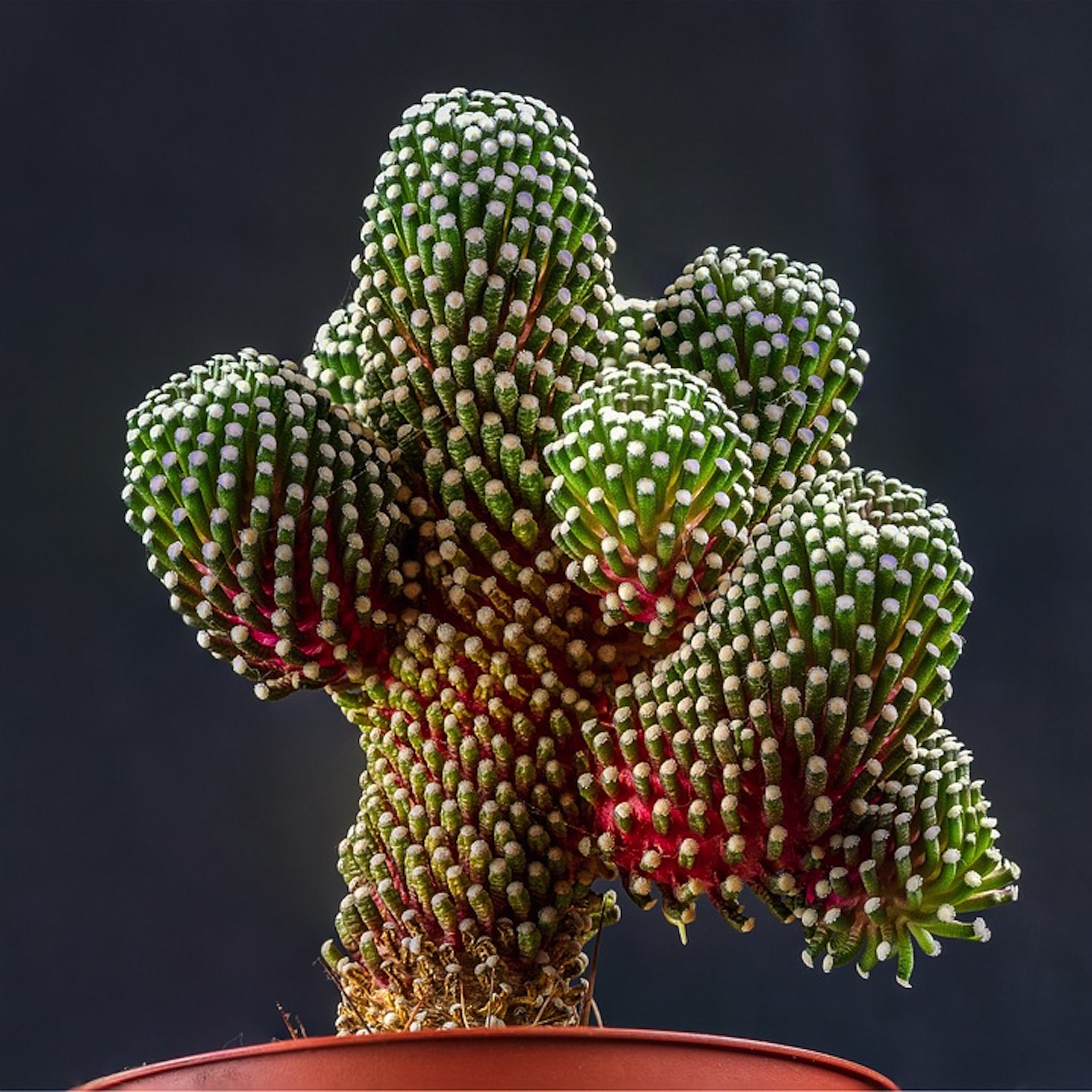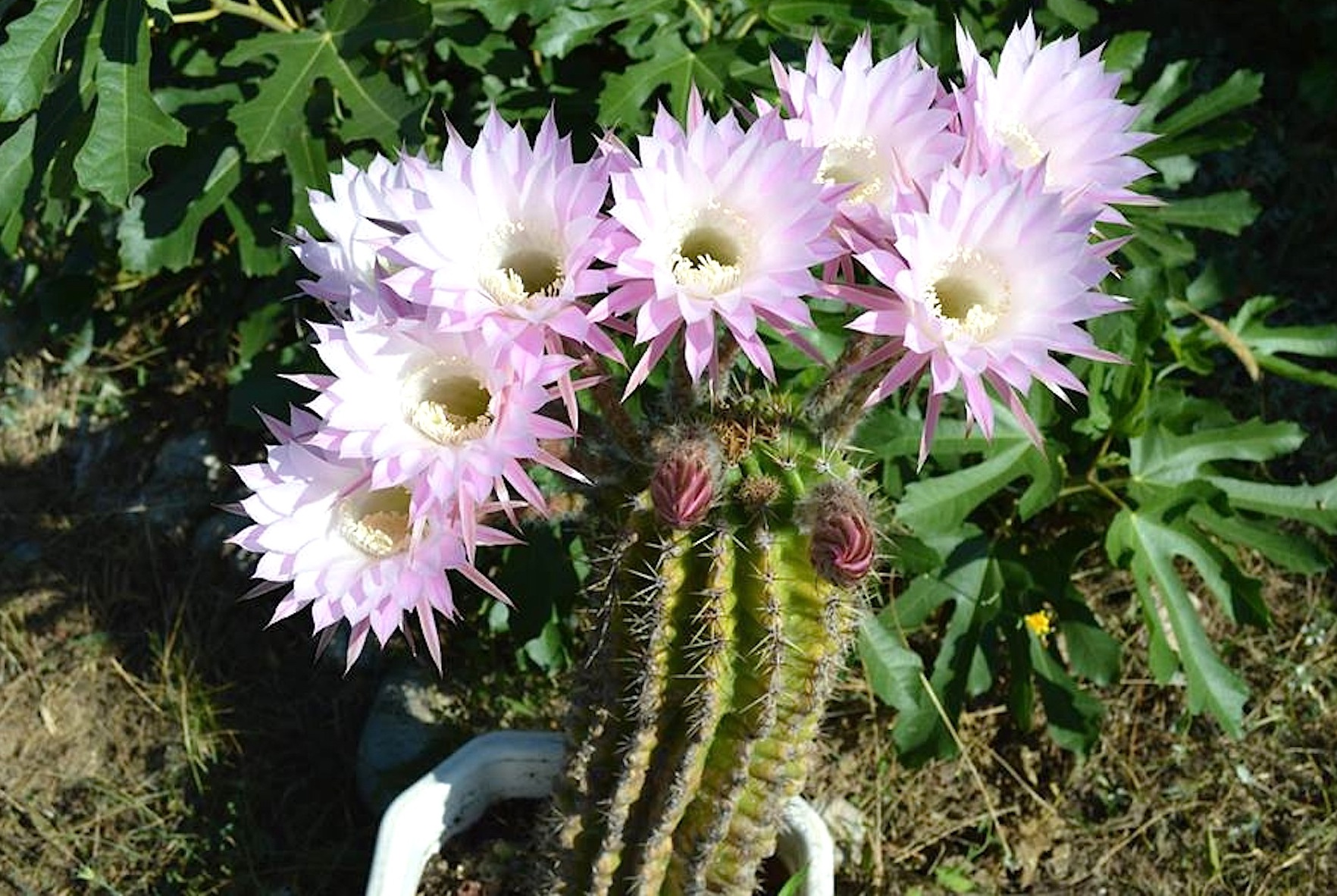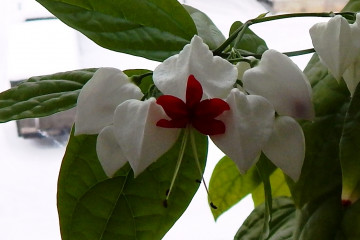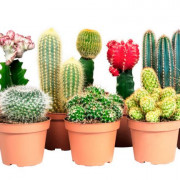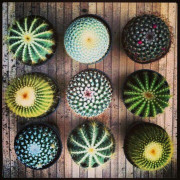How to care for a cactus: examples at home
Content:
For lovers of cacti, you can often find not a single specimen, but a whole mix of a dozen, or even two dozen plants of the most diverse and bizarre forms. Caring for cacti depends on which succulents they belong to - desert, forest, or, like the popular triangular euphorbia, to the euphorbia family.
How to care for a cactus
When buying in a store, they usually give recommendations on how to care for a particular cactus at home. Most thorny beauties are unpretentious, but differences in conditions of detention still exist.
Watering mode
Plant vitality is highly dependent on proper irrigation and water quality.
In summer, desert cacti (xerophytes) and triangular spurge should be watered once or twice a week; in winter one is enough. It is better to do this in the morning, so that by the evening the soil has time to dry out to a depth of 2-3 centimeters.
Forest (tropical) cacti are watered more often. In winter - twice a week, in the warm season - as the top layer of the earth dries up.
The earthen lump must be completely wetted, while waterlogging and, moreover, stagnation of water must not be allowed. It is desirable to use filtered or distilled water with a neutral pH reaction.
Air temperature
Cacti are not capricious, but they need care. In the summer, it is very useful for all cacti to be outside. No high temperature will harm xerophytes and milkweed, they like heat and bright sun. However, when the temperature drops to + 5-7 degrees, they need to be brought into the house, even if the sun is shining on the street with might and main.
In winter, it is better to keep them indoors, where it is from +5 to +15 C. Left warm, they will continue to grow, and since there is not enough light in winter, they will stretch and tilt towards the light source, acquiring an ugly appearance. In addition, many varieties lacking a dormant period do not flower.
Forest cacti such as aporocactus lash and Schlumberger - also known as Christmas and Decembrists - need cooler daytime temperatures in summer and even colder at night. If at night from +13 to +16 degrees, their flowering will be full and long.
Humidity
Cactus care also includes moisture control. Cacti are native to deserts and semi-deserts, so it is preferable to plant them in rooms with warm dry air.
Forest cacti prefer a humid air environment. It is difficult to maintain the optimal 80-90 percent humidity in the apartment for them, but you can create more comfortable conditions for existence if you regularly spray it. In hot summer weather, it is advisable to do this daily, in winter - a couple of times a month.
Lighting
Lighting is one of the most important factors for the normal growth and development of plants. Some succulents like to be in direct sunlight, others require diffused light, and others generally prefer to live in the shade.
Forest cacti are also responsive to grooming. They need light, but cannot stand direct sunlight. It is better to plant them on windows facing west or north. In the summertime, it is also useful for them to be outdoors, but in shaded places.
Euphorbia grows well both in the shade and in the sun. It can be kept on the balcony or outdoors all summer long.
Light is essential for photosynthesis and is a powerful stimulus for the growth and flowering of all cacti. With its lack, they lose their natural color, do not give growth and may not form buds for years. To avoid this, in semi-dark rooms, as well as in winter, when there are fewer sunny days, additional artificial lighting can be used.
The soil
The soil for planting cacti can be purchased at specialized stores. But you can cook it yourself, since the purchased soil for all succulents is often made on the basis of peat, which is not at all suitable for desert cacti. Under natural conditions, they grow on dry, mineral soil, where, due to the abundance of the hot sun, there are few soil microorganisms.
The ideal mixture for desert cacti is a low-nutrient substrate consisting of garden soil, fine river sand with the addition of perlite or pumice. You can also add a little bone meal.
The soil mixture for forest cacti should be looser and more breathable. In their natural environment, they most often live in rocky crevices or tropical trees, feeding on organic waste and rainwater. Therefore, the composition of the soil for epiphytic cacti includes:
- sod land;
- leafy land;
- river sand;
- low-lying peat;
- charcoal.
Top dressing
Caring for cacti also implies regular fertilizing with mineral complex fertilizers. As a rule, they are carried out during the period of active growth, that is, in the spring and in the first half of summer.
It is not always possible to prepare the perfect fertilizer at home. Therefore, it is better to buy it in a store and use it according to the instructions. For example, in the series of fertilizers "Flower Paradise" there are compositions for cacti.
For feeding and, at the same time, for disinfecting the soil, forest cacti are occasionally watered with a pale pink solution of manganese.
Boric acid is an excellent agent for enhancing flowering. It improves metabolic processes, increases the content of chlorophyll in the leaves, increases plant resistance to diseases. The spray solution is made at the rate of 0.1 g of boric acid per 1 liter of water. Spray in early spring.
Cacti will respond to grooming with a healthy look and lush flowering.
Methods for transplanting cacti
The transplant stimulates growth, promotes better flowering. Young plants are transplanted annually, old ones are enough to transplant once every two to three years, when all the free space of the container is filled with roots. For healthy specimens, the best transplant time is spring and early summer. Plants affected by rot, mold or pests are transplanted at any time of the year.
For a transplant you will need:
- the pot is a few centimeters wider than the previous one - the height depends on the type of cactus; when buying, it is necessary to take into account the volume of the drainage filler;
- special soil;
- a few pieces from a broken earthen vessel - they will prevent earth from leaking through the drainage hole when watering;
- drainage - expanded clay, brick chips or small stones to drain excess water and increase the air permeability of the soil.
Epiphytic cacti grow faster than desert cacti. You can visually determine if they need a transplant. If white roots appear in the drainage hole, and the aboveground part seems too large compared to the pot, then it's time to transplant.
Young plants of the Decembrist and other epiphytes are transplanted once a year, old ones - once every 3-4 years. New vessels should be wide, since the root system of forest cacti is spread more in breadth than in depth, and is located close to the surface.
Epiphytic cacti are more susceptible to fungal diseases; care for wet and slightly damaged roots - transplant. If the roots are significantly damaged, the situation will be saved only by re-rooting.
How to prune a diseased cactus
The healthy upper part of the plant is cut off and placed in water for several days. When the roots appear, the plant is planted in a new flower container. Phytohormone solution will accelerate rooting; it stimulates root formation and improves immunity.
Blooming cactus
Proper care of a cactus is the key to abundant flowering. The reasons why succulents do not bloom at all or do it rarely are different: diseases; too high or low temperature of the environment; excessive watering and high humidity for drought-resistant cacti; the air in the room where the tropical ones stand is dry. Frequent rearrangements of pots are also harmful.
If these problems are kept under control and properly fed exotics, they will surely please with long and abundant flowering. For example, the bright pink, purple or red flowers of aporocactus will adorn its long lashes from February to June.
Pruning cactus
Sometimes they ask how to prune a cactus and whether it should be done at all. Healthy, slow-growing varieties do not need pruning. But the quickly gaining mass of milkweed and specimens damaged by diseases must be pruned; the first - to prevent excessive growth, the second - to maintain health and decorative appearance. In forest species, lignified shoots are also removed - they will no longer have flowers. When cacti are sick, grooming includes pruning.
How to properly prune a cactus
The most gentle way of circumcision will help to make a sharp household knife. Milkweed produces a lot of juice when pruned. So that after drying on the trunk there are no white streaks, the fresh cut should be blotted with a napkin.
When trying to renew a plant by pruning, precautions are imperative - plant thorns often leave long-lasting wounds.
How cacti breed
To propagate cactus plants, you can use one of the following methods:
- children;
- seeds;
- cuttings.
Almost all types of succulents reproduce both by children and by seeds. It is not always possible to get seeds in room conditions, therefore reproduction more often occurs by children and cuttings. Sometimes, for the purpose of healing, rooting of the entire upper part of the stem is carried out.
Euphorbia is propagated by lateral and apical shoots.
Reproduction by children
Babies are small spiny processes on the main stem. Desert succulents such as rebutia and mammillaria have a lot of them.
The most viable grows closer to the crown. Sometimes they fall down on their own, sometimes they need to be separated with tweezers. Those that have fallen off usually already have small threadlike roots that help them quickly take root in a new place. So that ugly bald spots do not form on the mother plant, it is better to carefully remove the children with tweezers when they are still very small.
Seed propagation
This method takes more time than growing a new specimen from a cuttings or a baby, but this approach allows you to preserve the biological qualities of a particular subspecies or variety to a greater extent.
When the flowers wither, the dried seed pods fall off and the seeds are taken out of them. It is advisable to store them in the refrigerator before planting - stratification will ensure high germination in the future.
How to propagate a cactus by cuttings
In specimens of an elongated shape and in milkweed, the upper part of the stem (10-15 centimeters) is cut off, the cut is thoroughly washed to remove the juice - when it dries, it forms a film that prevents the growth of roots, and dried in the shade in the air. After a couple of days, the stalk is ready for planting.
How to root a forest cactus
Several upper segments are unscrewed from the mother plant in a circular motion, dried in the shade during the day and planted in a small wide bowl filled with a third of the substrate. If there is a greenhouse, they put it there, if it is not there, the plant is covered with a glass jar and periodically ventilated. From time to time, the cutting needs to be sprayed so that high humidity remains under the jar.
Currently, there are more than 2000 species and varieties of decorative cacti. Their external variety is amazing. Most cacti are long-lived, but they can bloom only with special care. For example, echinopsis, with proper care, even in indoor conditions, can live for more than half a century and all this will delight the eye with a kind of beauty for a long time.


